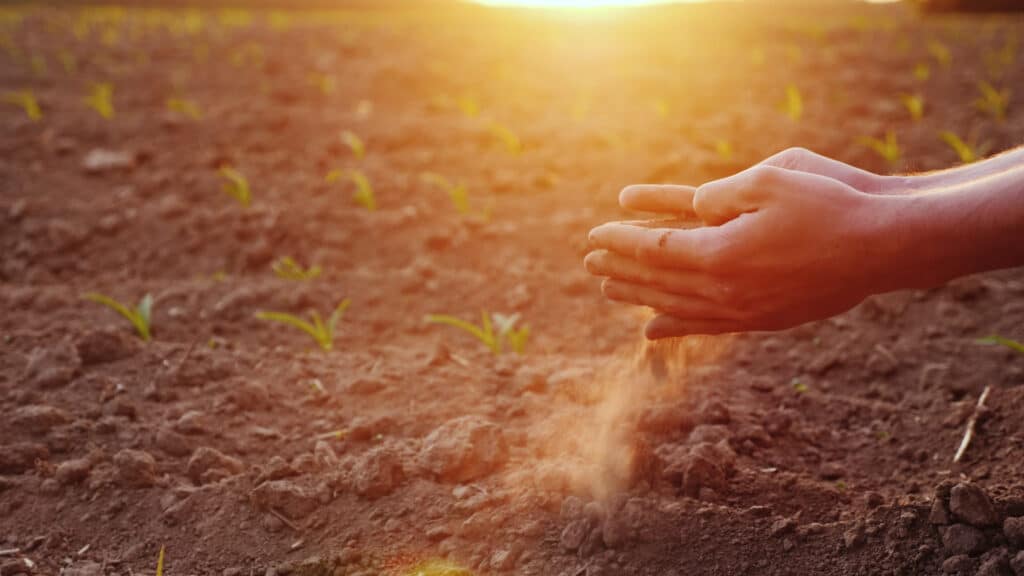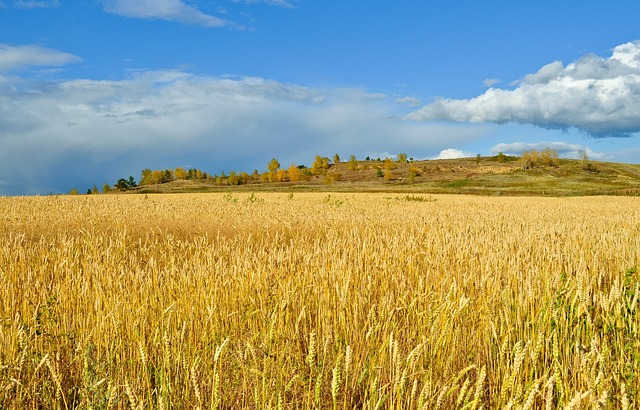The Ukraine-Russia war further emphasized Europe’s high dependency on external gas suppliers. As a result, in March 2022, the European Commission announced that it had doubled its objective for home-grown biomethane production to 35 billion cubic metres per year by 2030. The aim was to increase EU’s resilience regarding the ongoing and increasing energy crisis.

This is good news for seed companies, working on biogas specific varieties. To learn more about biomethane and biogas and its impact on Europe’s gas addiction, European Seed sat down with Angela Sainz Arnau, Communications Manager at the European Biogas Association (EBA), to get EBA’s take on the benefits of biogas and how to get Europe self-reliant on gas.
European Seed (ES): Angela, can you explain in a nutshell what the EBA is, and explain a bit about its activities?
Angela Sainz Arnau (ASA): Biogas, biomethane and other renewable gases are an important corner stone of a carbon-neutral economy in Europe. The European Biogas Association advocates for the recognition of biogas and biomethane as sustainable and flexible energy sources that provide multiple benefits. These green gases support the development of a circular bioeconomy. They can help us make optimal use of all our resources valorising waste and promoting the agroecological transition, while improving our security of supply and the storage of renewable energy.
Supported by its members, the EBA is committed to work with European institutions, industry, agricultural partners, civil society organisations and academia to develop policies which can enable the large-scale deployment of renewable gases and organic fertilisers throughout Europe. This should build on transparent, well established sustainability certification bodies to ensure sustainability remains at the core of the industry.
ES: Which are some of the benefits of using biogas?
ASA: Biogas and biomethane are renewable gases which help abate emissions across the whole value chain. Their use is essential if we are to accelerate the reduction of GHG emissions in multiple sectors, including buildings, industry, transport, and agriculture.
The existing gas infrastructure is biomethane-ready. This is key to ramping up decarbonisation and providing affordable renewable energy for consumers. In addition, biomethane can be easily stored and produced at a constant pace, helping balance energy supply from intermittent energy sources of renewable origin, such as solar or wind. It can also be traded and produced within Europe, ensuring the EU’s security of supply, and avoiding dependence on external providers.
Biogas and biomethane are generated from different types of organic residues, turning waste into a valuable resource, which is the core principle of an efficient circular economy. Food waste or wastewater can be recovered from our cities and used to produce renewable energy, which helps develop a local bioeconomy.
In the countryside, residues from animal farming or biomass from agriculture can be optimised and converted into energy, while digestate can be used as an organic fertiliser, improving soil quality and biodiversity in farmlands. This creates additional business models in the farming sector, making it more cost competitive, and promotes sustainable farming and supporting long-term rural development.
Additionally, the sector is a real opportunity for the exploitation of the biogenic CO2 market. From 1 ton of biogas, we obtain almost 2 tons of biogenic CO2.
ES: Can you share some biogas success stories?
ASA: There are many biogas and biomethane success stories across Europe.
In Spain, with substantial feedstock potential for biogas production, the city of Madrid produces more than a million tons of urban waste per year. Valdemingómez Technology Park treats over 90 per cent of the organic matter from the waste that enters its processing plant. Out of this waste, it generates of electricity, enough for the consumption of 59,367 homes and the surplus is used to run the facility. This plant claims to have effectively saved 1,130,768 tonnes of greenhouse gas emissions.
In the UK, Future Biogas currently operates 11 plants, collaborating with local farms to produce over 400GWh of biomethane and provide energy for 40,000 homes. They also integrate biogas production with carbon capture and storage technology (BECCS). The captured CO2 will supply it for the Northern Lights Project.
In Norway, the Skogn I facility is one of the largest plants for liquified biomethane production (bio-LNG). Bio-LNG can be used as renewable transport fuel and is very convenient to decarbonize heavy-duty transport, including trucks and ships covering long distances. The plant produces 25 tonnes of liquid biomethane per day. The primary feedstock for the plant is waste and byproduct from the Norwegian fish farming industry and process water from the pulp and paper industry.
These are just some examples of biogas and biomethane production and use, but there are many others across Europe.
ES: What is the EBA’s position on the EU’s Green Deal?
ASA: The EBA welcomes the ambition of the European Commission in the Green Deal to strive for climate-neutrality by 2050. This is both a big challenge and opportunity for Europe and will only be possible with holistic and comprehensive policies which make full use of sector coupling and integration models.
Renewable energy will need to replace fossil energy and Europe will at last need to implement a polluter-pays-principle, taking account of the full spectrum of pollutants, including CO2 to NOx emissions and particulate matter. Renewable gases, including biogas and biomethane, will play a key role in helping Europe’s transition to a clean energy system with a genuinely resource-efficient and circular economy.
Renewable energy will need to replace fossil energy and Europe will at last need to implement a polluter-pays-principle.
European policies must be aligned and made fit for purpose across all sectors, on and off the grid. Among other policies, what is needed is, on the one hand, energy prices which reflect all climate and environment externalities (CO2 and air pollutants, biodiversity), and, on the other, an EU target for renewable gases included in EU legislation and reflecting a clear commitment to increasingly green the gas supply. This would encourage EU Member States to unlock their national potential of renewable gases which would generate ample benefits: adequate waste management, resource-efficient agriculture and displacement of fossil energy triggering significant emission savings.
ES: Which policy changes are needed in the EU, to make Europe’s agriculture more sustainable?
ASA: The EBA believes that biogas and biomethane production can strongly support the agroecological transition. Agroecology supports farming in such a way that does not impose any harm to environment and preserves biodiversity. This means reducing GHG emissions, keeping the soil alive with organic matter, protecting biodiversity, improving nutrient quality, nurturing the soil with organic fertilizers, and supporting sustainable farming and rural development.
The EBA believes that biogas and biomethane production can strongly support the agroecological transition.
The combination of biogas and biomethane production with farming can trigger a more resource-efficient and sustainable agriculture but tapping into those benefits will only be possible with the relevant legislative measures in place. The Common Agricultural Policy should facilitate the simultaneous production of food and renewable energy, allowing thereby extra-income for European farmers. Farmers should also be incentivized to use bio-fertilizers (digestate) to reduce costs and emissions related to mineral fertilizers, and secure food production from the impact of dwindling international reserves of key minerals such as phosphorous. In this context, the European Commission’s Nutrients Action Plan expected by the end of the year, could identify a clear strategy for better management practices stimulating nutrient recycling. Also, the proposal building on the Sustainable Carbon Cycle Communication should set a clear framework to stimulate carbon farming.
Additional benefits from use of digestate, obtained from biogas production, as organic fertilizer and sequential crops can yield carbon sequestration volumes in soil. The EU Member States should be incentivized to demonstrate soil carbon savings in line with the Renewable Energy Directive carbon negative credits eligible for trading within the ETS or other carbon trading regimes.
And introducing long-term, harmonized sustainability criteria for biomass in Europe, in line with the sustainability criteria of the Renewable Energy Directive, would encourage sequential cropping, thus benefiting soil quality and mitigating pesticide application.

Biogas and biomethane support the development of a circular bioeconomy.
ES: Recently the European Commission announced that it had doubled its objective for home-grown biomethane production to 35 billion cubic metres (bcm) per year by 2030? Is this realistically achievable?
ASA: The ambition is high, but the target is feasible: Europe is producing today 15 bcm of raw biogas and 3 bcm of biomethane (upgraded biogas) from approximately 20,000 biogas and biomethane plants. By 2030, the proposed expansion will replace 20 per cent of the current fossil gas imports from Russia. Biomethane can be directly injected into the gas grid with no need for large infrastructure investments. It is also a good complement of wind and solar energy, as it can be easily stored and produced at a constant pace, helping balance energy supply from variable renewable energy sources.
By 2030, the proposed expansion of homegrown biomethane will replace 20 per cent of the current fossil gas imports from Russia.
Biomethane deployment is also economically viable. Earlier this year, natural gas prices went over €200 and are today around €85. While this happens, biomethane production costs are getting lower. Typical biomethane production costs in Europe range between 55 and 100 €/MWh, depending on location, feedstock, size, and setup of the plant.
Anchoring the 35 bcm in legislation and making sure that there are solid trajectories and milestones, is necessary to reach the target. If we look at the market, the sector needs easy market access, cutting away red tape and eliminating persisting internal market barriers. For this, we need also dedicated and innovative finance instruments to mitigate risks and have the needed capital to roll out biomethane at scale. The sector will need to tap into sustainable feedstocks such as waste, urban wastewater and sustainable crops.
ES: How can the plant breeding and seed sector help in achieving that goal?
ASA: The REPowerEU launched by the European Commission mentions that the biomethane potential can be increased through extra production of sustainably produced biomass. This can be, for instance, biomass from sequential cropping. This agricultural practice involves two different crops growing in sequence on a same piece of land in a same farming year. Usually, a second crop is planted after a preceding main crop has been harvested, without competition of land for food and feed, enabling the available natural resources to be preserved and more efficiently utilized. These crops increase soil health, soil quality & biodiversity and do not need to be fully grown before being harvested.
We can also use biomass from marginal lands as feedstock for biomethane production. Those are lands where the agronomic conditions are not suitable for food & feed production, might still be good to grow non-food crops. Also, biomass from contaminated lands is unfit for food or feed production and can be used to produce biomethane. Phytoremediation technologies are being used and further developed for growing crops on those lands. The crops will absorb the contaminants from the soils and purify the soil.
New crop varieties tailoring those applications will contribute to increase Europe’s biomethane potential.
New crop varieties tailoring to sequential cropping and better use of marginal lands will contribute to increase Europe’s biomethane potential.
ES: Does the EU have enough biogas facilities, and if not, how many more do we need?
ASA: The implementation of the REPowerEU will require a smart combination of investments and reforms starting from this year. The full value chain of biomethane producers, and users, will need to cooperate with public authorities and civil society organisations to identify current bottlenecks and propose solutions for a sustainable scale-up. The sector will need guidance, including relevant legislative and financial support in the coming years. To meet the 2030 target, the EBA foresees the need for additional capital investments. Europe will need €48 bn to build 4,000 medium-size units and €35 bn to build 1,000 large-scale plants in 8 years. It is a realistic objective: Germany alone built 6,000 plants in 9 years.
Expanding biomethane production is possible using sustainable feedstocks, including waste, agricultural residues and sequential crops. By 2030, the EBA foresees increased feedstock supply for biomethane production from food waste, industrial and urban wastewater and agricultural residues.
The EBA has summarised the required actions to reach the target in the short, medium and long-term in a recent publication: https://www.europeanbiogas.eu/wp-content/uploads/2022/06/Short-mid-and-long-term-strategies-to-speed-up-biomethane-deployment-in-Europe.pdf
Read More from the September Issue:
Forget The Avengers! Plant Breeders are Saving the World
Putin’s Appetite for War Has The World Feeling Pangs of Hunger











